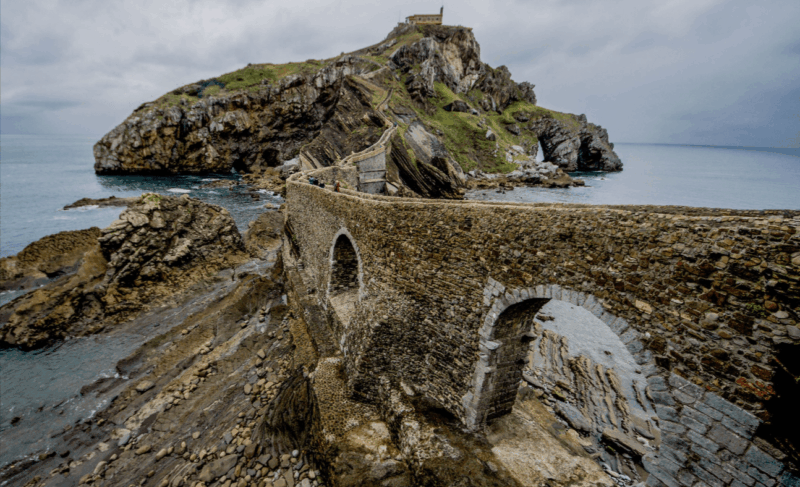Perched dramatically on a rocky outcrop along Spain’s Costa del Azahar, Peñíscola is a cliffside fortress town that feels like a secret waiting to be discovered. With its medieval castle, winding cobblestone streets, and sparkling Mediterranean beaches, this gem in Castellón province blends history, beauty, and charm. Often called the “Gibraltar of Valencia,” Peñíscola offers a quieter alternative to Spain’s bustling tourist hubs, making it a must-visit for travelers seeking something special. This 2000-word article explores why Peñíscola deserves a spot on your itinerary, covering its rich history, iconic landmarks, vibrant culture, and practical travel tips, all written in a simple, beginner-friendly style for readers new to this enchanting destination.
A Journey Through Peñíscola’s Past
Peñíscola’s history stretches back over 3000 years, starting with its founding by the Phoenicians around 1000 BCE. The Romans later named it Península, meaning peninsula, due to its unique cliffside location jutting into the sea. Under Muslim rule in the 8th century, it became Banūskula, a fortified coastal stronghold. For those eager to dive into Spain’s ancient coastal towns, expertadvis com offers engaging insights into their early histories.
The Knights Templar’s Legacy
In 1294, the Knights Templar took control of Peñíscola, transforming it into a fortified town. They constructed the Castillo de Peñíscola, a stone fortress atop the cliffs, completed in 1307. Its sturdy walls and strategic position made it nearly impregnable. The Templars’ influence is still evident in the castle’s austere design. To learn more about their role in Spain, newsflarenow com provides beginner-friendly resources on their medieval legacy.
The Papal History of Papa Luna
Peñíscola gained international fame in the 15th century as the residence of Pope Benedict XIII, known as Papa Luna, during the Western Schism. Exiled from Rome, he turned the castle into a papal court, earning Peñíscola the nickname “City of the Pope.” His story adds a unique layer to the town’s history. For a simple guide to this intriguing period, magnexusbuzz com explains Papa Luna’s impact in an accessible way.
The Enchanting Old Town
Peñíscola’s Casco Antiguo (Old Town) is a maze of narrow, whitewashed streets adorned with colorful flowers and historic buildings. The Portal Fosc, a 14th-century gate, welcomes visitors into this medieval heart, where every corner feels like a step back in time. Wandering these alleys is a highlight for history lovers. For tips on exploring medieval towns, someonemeet com offers easy-to-read walking guides.
Inside the Castillo de Peñíscola
The Castillo de Peñíscola is the town’s crown jewel, offering breathtaking views of the Mediterranean and a glimpse into its Templar and papal past. Visitors can tour its stone halls, courtyards, and battlements, with exhibits detailing Papa Luna’s life and the castle’s history. Its cliffside perch makes it a photographer’s paradise. For planning a castle visit, synthentix com shares practical itineraries for first-time travelers.
A Hollywood Star
Peñíscola’s dramatic scenery has made it a favorite for filmmakers. The castle and old town starred in the 1961 epic El Cid, featuring Charlton Heston, and in Game of Thrones as the city of Meereen. These appearances have put Peñíscola on the map for film buffs, adding a modern twist to its medieval charm. For more on its cinematic fame, bluereddy com provides beginner-friendly insights into film tourism.
Peñíscola’s Pristine Beaches
Peñíscola boasts two beautiful beaches: Playa Norte, a lively, golden stretch beside the castle, and Playa Sur, a quieter cove perfect for relaxation. Both offer crystal-clear waters and stunning views of the fortress, blending history with leisure. The beaches’ proximity to the old town is a rare treat. For coastal travel ideas, dobains com highlights the best beach destinations in Spain.
The Church of Santa María
Nestled in the old town, the Church of Santa María is a 13th-century Gothic treasure with a baroque bell tower added in the 18th century. Its simple interior, with vaulted ceilings and religious artifacts, offers a peaceful retreat. Its location near the castle makes it an easy stop. For visiting historic churches, mingisuin com offers simple guides for travelers.
The Lighthouse’s Coastal Charm
The Faro de Peñíscola, built in 1892, sits at the castle’s base, guiding ships along the Costa del Azahar. Though not open to visitors, its picturesque setting is ideal for photos, especially at sunset when the cliffs glow. The surrounding paths offer panoramic sea views. For capturing coastal scenery, screenerupdates com shares beginner-friendly photography tips.
Festivals That Light Up Peñíscola
Peñíscola’s festivals bring its history and culture to life. The Fiestas Patronales in September honor the Virgin of Ermitana with processions, concerts, and fireworks. The Moors and Christians Festival in August recreates medieval battles with colorful costumes and parades. These events are a vibrant draw for visitors. For festival planning, newsboostspot com provides engaging content on Spanish traditions.
The Mediterranean Cuisine
Peñíscola’s dining scene celebrates its coastal location. Savor fresh seafood dishes like arroz a banda (rice with fish), suquet de peix (fish stew), or grilled sardines at restaurants like Casa Jaime. Pair your meal with local Valencian wines. The town’s seaside eateries offer stunning views. For foodie recommendations, site:expertadvis.com highlights Peñíscola’s best dining spots.
The Serra d’Irta Natural Park
Just outside Peñíscola, the Serra d’Irta Natural Park offers rugged cliffs, hidden coves, and hiking trails with sweeping coastal views. It’s a perfect escape for nature lovers, complementing the town’s historic attractions. The park’s untouched beauty is a highlight for adventurers. For exploring Spain’s natural parks, site:newsflarenow.com offers practical outdoor guides.
The Walls of Peñíscola
The town’s medieval walls, built by the Knights Templar and later reinforced, encircle the old town, adding to its fortress-like feel. The Muralla del Mar, facing the sea, is especially striking, with cannons still in place. Walking along the walls offers a glimpse into Peñíscola’s defensive past. For more on medieval fortifications, site:magnexusbuzz.com provides beginner-friendly insights.
The Casa de las Conchas
A quirky attraction, the Casa de las Conchas is a house covered entirely in seashells, created by a local resident as a tribute to Peñíscola’s maritime heritage. Located in the old town, it’s a fun, photogenic stop that adds whimsy to the historic setting. For visiting unique landmarks, site:someonemeet.com shares simple travel tips.
Exploring the Old Town’s Alleys
The old town’s narrow streets, like Calle Mayor and Calle de los Caballeros, are lined with artisan shops, cafés, and historic homes. These alleys, with their stone arches and colorful shutters, are perfect for leisurely strolls and discovering hidden gems. For planning old town explorations, site:synthentix.com offers beginner-friendly walking itineraries.
Peñíscola’s Maritime Heritage
Peñíscola’s identity is tied to the sea, from its fishing traditions to its role as a medieval port. The Museo del Mar, located near the harbor, showcases the town’s maritime history with exhibits on fishing, shipbuilding, and Papa Luna’s era. It’s a great stop for history buffs. For more on coastal heritage, site:bluereddy.com provides accessible content.
Day Trips from Peñíscola
Peñíscola is a great base for exploring the Costa del Azahar. The nearby Morella, a medieval hilltop town, offers stunning castles and walls, while Benicàssim boasts beautiful beaches and festivals. These destinations add variety to a visit. For multi-destination itineraries, site:dobains.com shares beginner-friendly suggestions.
Practical Tips for Visiting
Peñíscola is compact and walkable, with most attractions in the old town. Start at the Castillo de Peñíscola, then wander the Casco Antiguo and relax at Playa Norte. The Tourist Office near the castle provides maps and event schedules. For planning a visit, site:mingisuin.com offers detailed travel itineraries.
Getting to Peñíscola
Peñíscola is a 2-hour drive from Valencia or 3 hours from Barcelona, with regular buses from both cities. The nearest train station, Benicarló-Peñíscola, is 7 km away, with local buses to the town. Parking is available outside the old town. For travel logistics, site:screenerupdates.com provides helpful advice for visitors.
Why Peñíscola Is Unforgettable
Peñíscola stands out for its unique blend of medieval history, cinematic fame, and coastal beauty. The cliffside castle, vibrant old town, and pristine beaches create a destination that feels both timeless and inviting. Its uncrowded charm makes it perfect for a relaxed getaway. For more on hidden gems, site:newsboostspot.com highlights places like Peñíscola.
Conclusion: A Coastal Treasure Awaits
Peñíscola’s cliffside fortress, colorful streets, and Mediterranean allure make it a destination you never knew you needed to visit. From exploring the Castillo de Peñíscola to savoring fresh seafood, every moment in this town is unforgettable. Whether you’re a history buff, beach lover, or film fan, Peñíscola delivers. Plan your trip with resources like newsboostspot com and discover the magic of this Spanish coastal gem.


